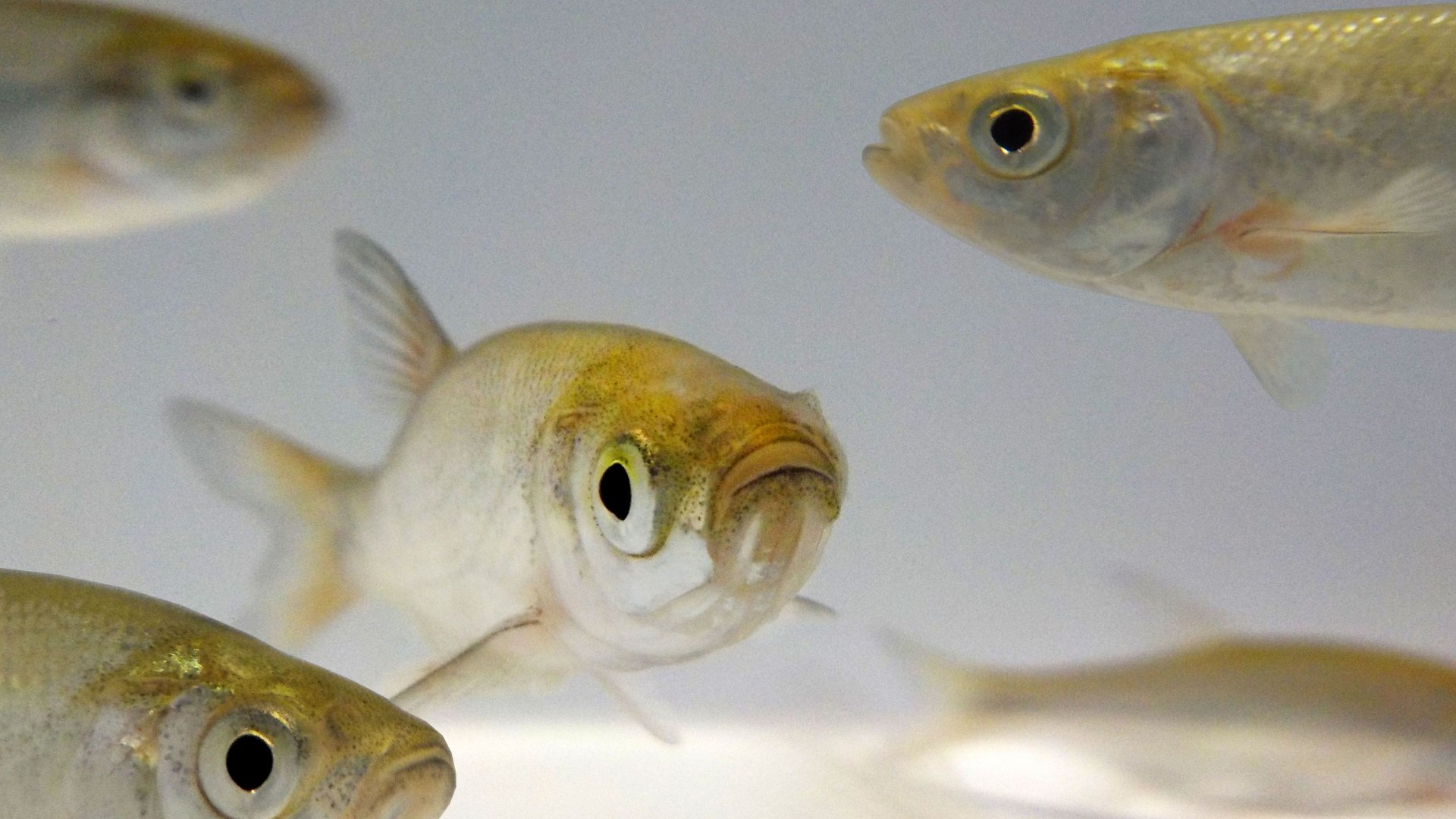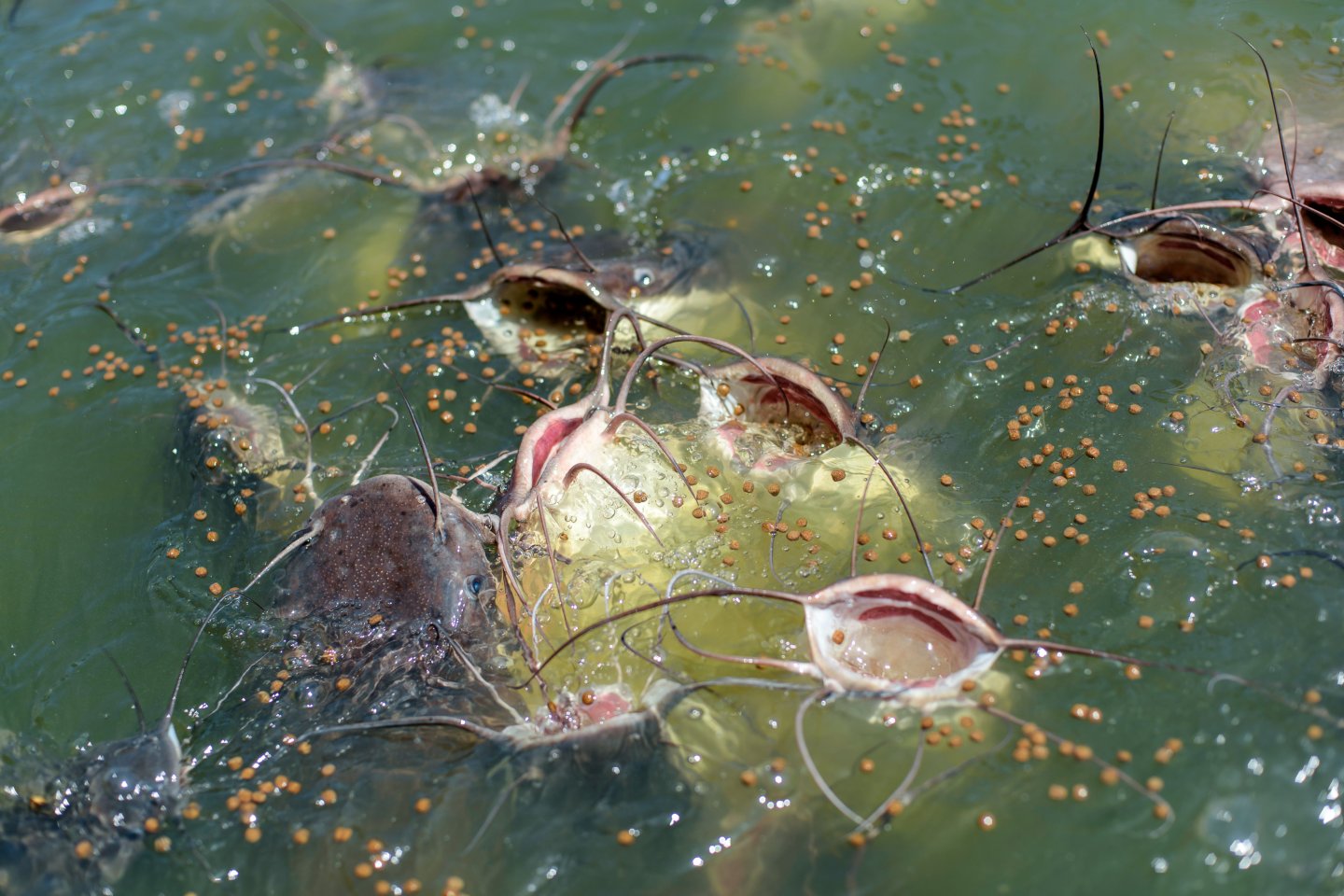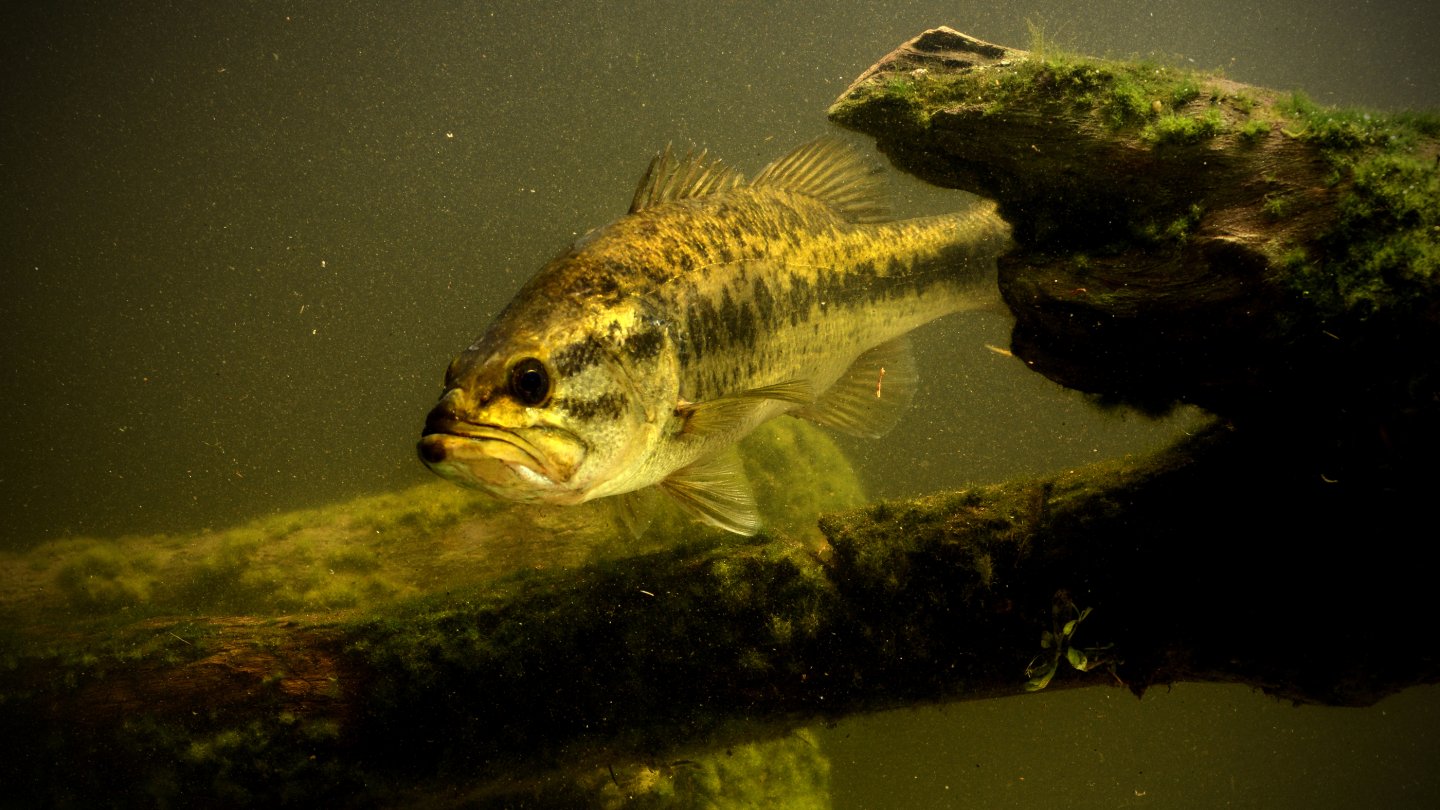
The food web in your pond or lake may seem simple, but there’s probably more going on than you may realize at first glance. The base of the food web is a single-celled algae called phytoplankton. Phytoplankton is not only a main contributor of oxygen to the pond, but also the base of the food web. Microscopic organisms known as zooplankton feed on phytoplankton. In turn, zooplankton is consumed by small fish, including fathead minnows, golden shiner minnows and juvenile gamefish. Larger predators prey on smaller fish of all species. An abundance of phytoplankton supports larger populations of fish and results in a more productive fishery.
Largemouth bass are ambush predators that swallow their prey whole. These fish begin consuming other fish when they reach about 2” in length. The size of available forage fish limits what the bass can eat. Typically, the larger the bass, the larger their ideal prey. As such, adult largemouth bass and channel catfish diets primarily consist of small to intermediate sized bluegill sunfish. Unfortunately, in many ponds there is an inadequate sunfish population. As these predators consume available bluegill sunfish they further decimate the sunfish population and ultimately slow their own growth rates.
Supplemental stockings of fathead minnows, golden shiner minnows and bluegill sunfish are often necessary to maintain a stable forage base and facilitate predator growth rates. Stocking fathead minnows and golden shiner minnows ensures there is a variety of different sized forage fish for up-and-coming gamefish. Their presence also alleviates some of the feeding pressure on the sunfish population. By reducing feeding pressure, more bluegill sunfish will survive, reach sexual maturity and reproductively contribute to the population.


Fathead minnows and golden shiner minnows should be stocked twice a year, in the spring and fall. As water temperatures warm in the spring, gamefish begin foraging as they prepare to spawn. Adding forage fish at this time reduces the likelihood that largemouth bass and other predators waste their time looking for food. With an abundance of food, they can reserve their energy for egg production, nest protection and successful spawning. Underfed fish will often reabsorb their eggs when food is in short supply, leading to missing age groups and poor fishing.
Fall forage stockings are critical to ensure that largemouth bass and other predators have the fat reserves to make it through long, cold winters. Without an adequate forage base, unhealthy fish may succumb to the stresses of a long, cold winter. Regularly stocking fathead minnows and golden shiner minnows increases forage fish availability, helps maintain healthy fish populations, and promotes fish growth and successful reproduction.
View pricing and stocking recommendations here.


